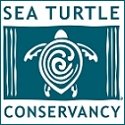Each year, thousands of hatchling sea turtles emerge from their nests on many of the world’s sandy beaches and enter the ocean. Sadly, as few as one in 1,000 will survive into adulthood. The natural obstacles that young and adult sea turtles face are staggering. However, it is the increasing threats caused by humans that are driving these species to extinction. Today, six out of seven sea turtle species are considered endangered or critically endangered worldwide. In order to ensure that sea turtles do not go extinct, it is vital that scientists, conservationists, governments and the general public work together to combat these human threats.
Each turtle is swimming to raise awareness about a “Cause.” As a turtle is supported through Adopt-A-Turtle donations, her Cause Meter will show the amount raised by that turtle. Each Cause represents a threat listed below
Plastic & Marine Debris
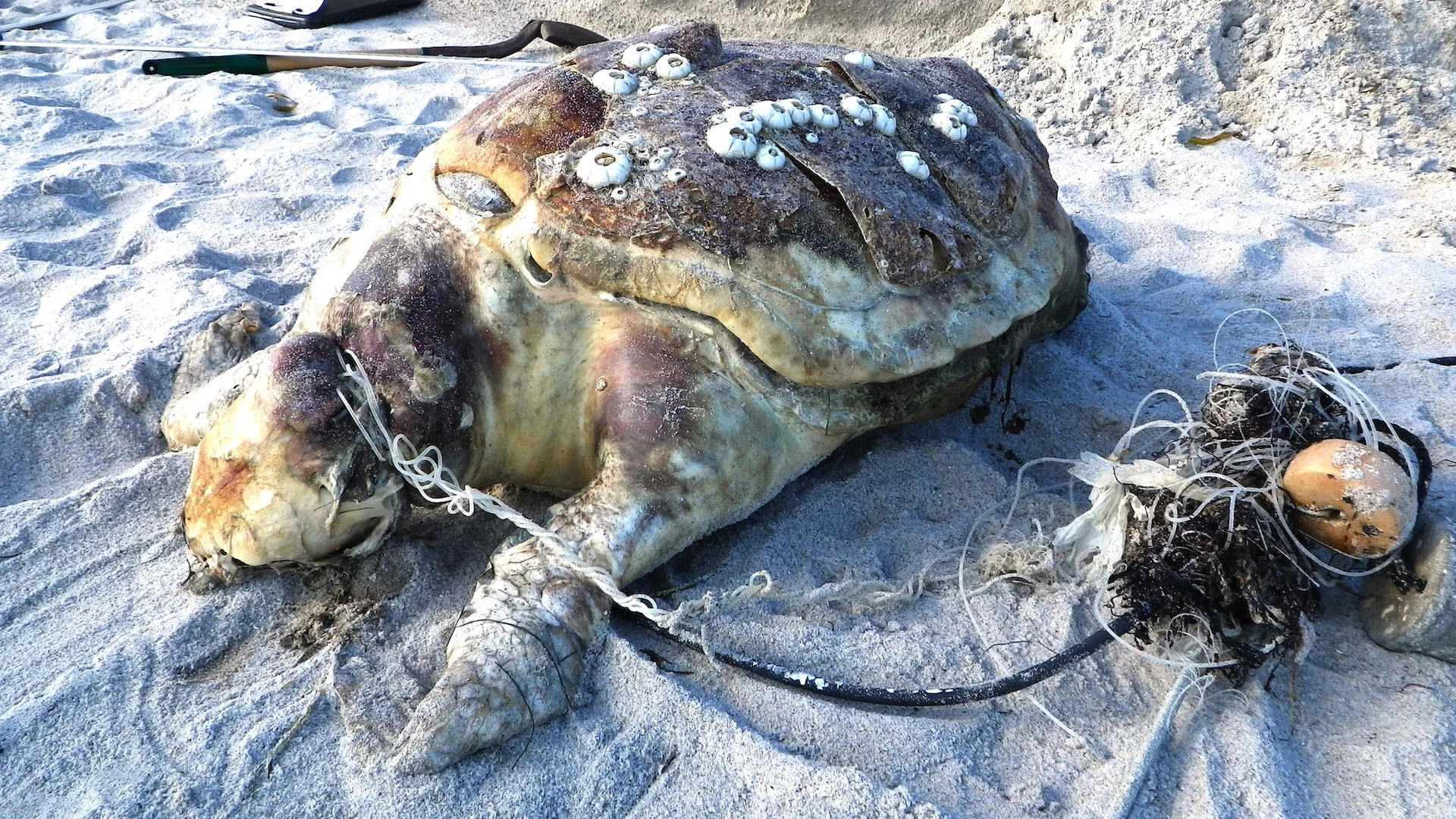
It is estimated that more than 100 million marine animals are killed each year due to plastic debris in the ocean. More than 80% of this plastic comes from land. It washes out from our beaches and streets. It travels through storm drains into streams and rivers. It flies away from landfills into our seas. As a result, thousands of sea turtles accidentally swallow these plastics, mistaking them for food. Most of the debris is recognizable: plastic bags, balloons, bottles, degraded buoys, plastic packaging, and food wrappers. Some plastics aren’t so easy to see, so small, in fact, that it is invisible to the naked eye. If sea turtles ingest these particles, they can become sick or even starve. Learn more about Honu, Tingum, and Seartina’s Cause.
Water Quality
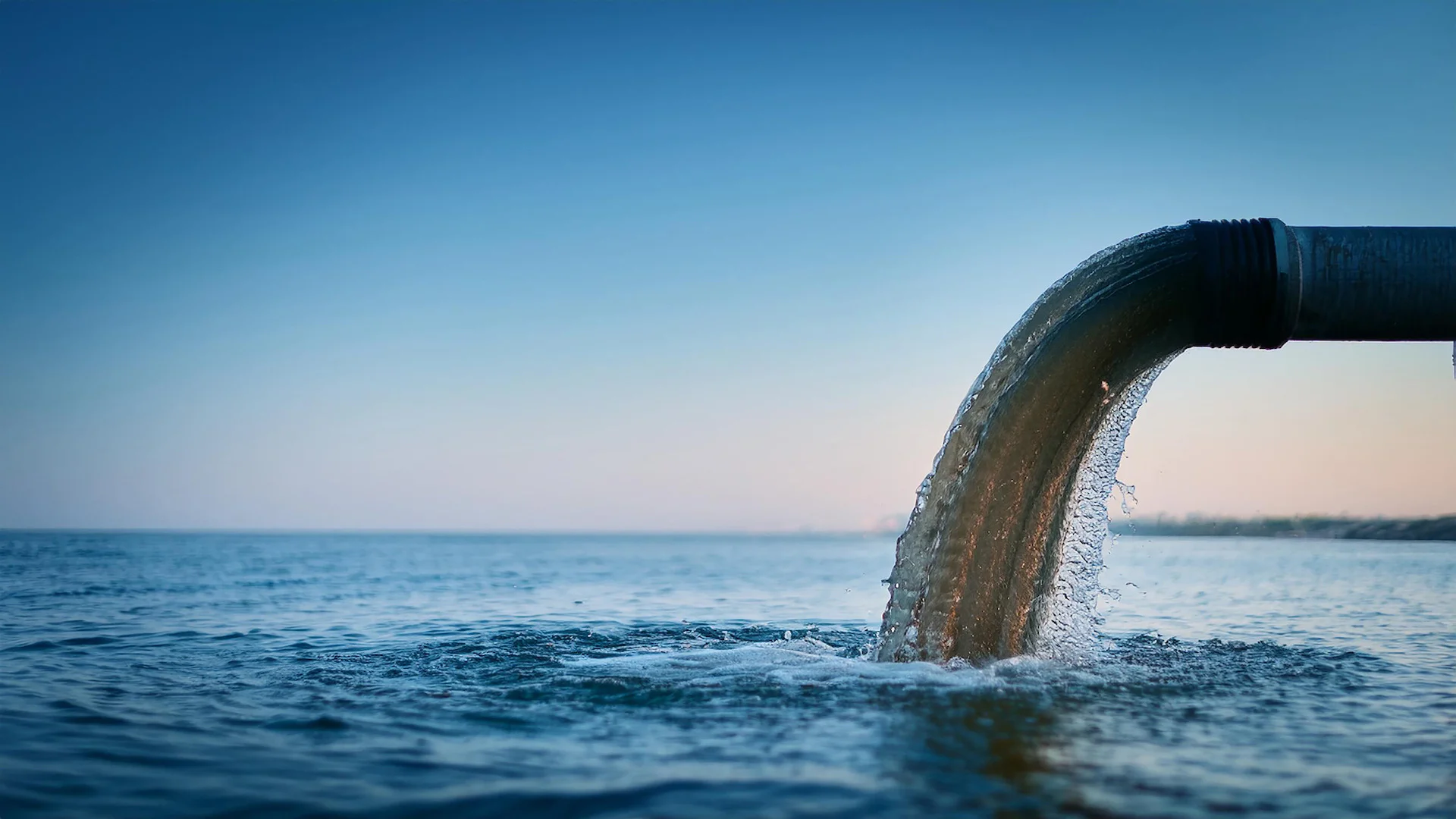
Water quality is affected by chemical run-off that makes it to the sea. The ocean, while it seems so vast, had long been a dumping ground for much of the waste produced on land. From solids to chemicals and even nuclear products, waste has been dumped in the ocean with the mindset that it will eventually disperse and become harmless. It is not harmless though, and can become even more concentrated and dangerous after entering the food chain. Even when humans aren’t directly dumping waste into the oceans though, toxic chemicals are still making their way to the sea. Fertilizers, pesticides and other products often make it to waterways through chemical run-off. These chemicals can seep into the soil and travel for long distances, eventually reaching the oceans where they can be carried by currents. Learn more about Sol’s and Haven’s Cause.
Boat Strikes
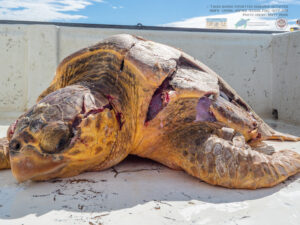
Boat strikes are widely acknowledged as a significant threat to fresh and salt water turtles and other marine animals. According to the Sea Turtle Stranding Network, boat strikes have tripled in Florida since 1980. Sea turtles have poor hearing and vision when out of the water, and many times will not notice an approaching boat in time to move to safety. Turtles can be hit when they come to the surface to breathe or when feeding or mating in shallow areas. Turtles can be injured and sometimes killed by blunt-force trauma from boat impact or propellers. Turtles that do survive boat impacts may receive scars and lose limbs, and most eventually die from boat-related injuries. Learn more about Riptide’s Cause.
Light Pollution
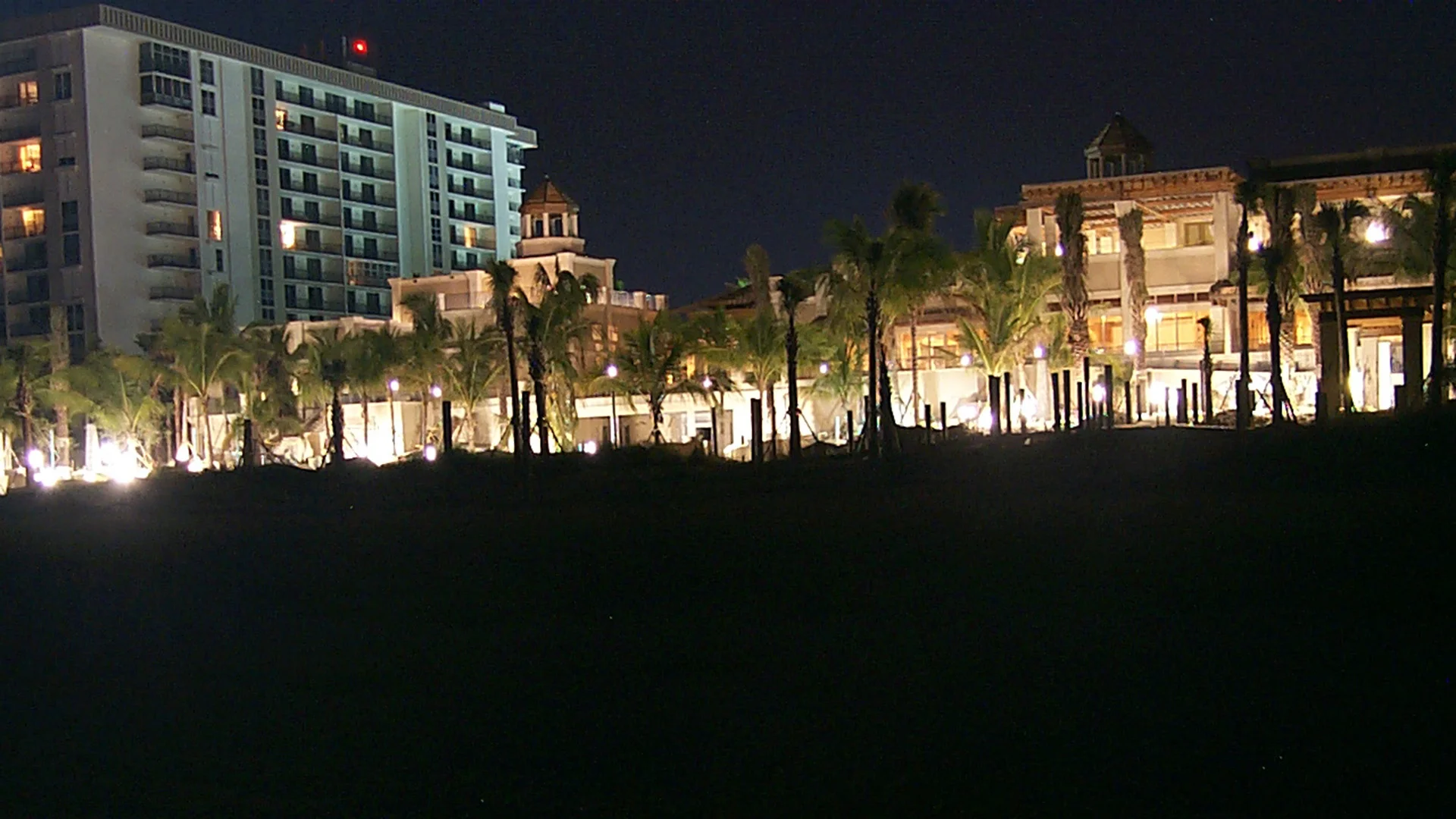
Nesting turtles depend on dark, quiet beaches to reproduce successfully. Today, these turtles are endangered, in part, because they must compete with tourists, businesses and coastal residents to use the beach. This man-made, coastal development results in artificial lighting on the beach that discourages female sea turtles from nesting. Instead, turtles will choose a less-than-optimal nesting spot, which affects the chances of producing a successful nest. Also, near-shore lighting can cause sea turtle hatchlings to become disoriented when they are born. Instead, they will wander inland where they often die of dehydration, predation, or even from being run over on busy coastal streets. Learn more about Crush, Winnie and Moana’s Cause.
Climate Change

Because sea turtles use both marine and terrestrial habits during their life cycles, the affects of climate change are likely to have a devastating impact on these endangered species. Climate change affects nesting beaches. With melting polar ice caps and rising sea levels, beaches are starting to disappear. As the water level begins to rise, the size of nesting beaches decreases. Stronger storms, predicted as a result of increasing temperatures, will continue to erode coastal habitats. Higher temperatures can adversely affect sea turtle gender ratio. Increasing incubation temperatures could result in more female sea turtles, which reduces reproductive opportunities and decreases genetic diversity. Learn more about Pebbles and Billy’s Cause.
Egg Harvest for Consumption
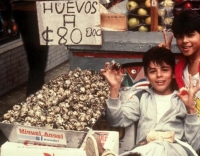
A similar threat to the harvest for meat consumption, the harvest of eggs for consumption is also conducted in many cultures around the world, especially in Central America. During the nesting season, turtle hunters comb the beaches at night looking for nesting females. Egg hunters either try to encounter females deposited her eggs or look for fresh nests in the early morning hours. Most eggs collected are then sold, rather than consumed by the egg poacher. Learn more about Buddy and Miso Speedy’s Cause.
Oil Spills
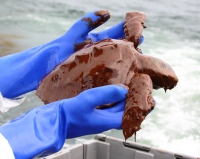
Marine pollution can have serious impacts on both sea turtles and the food they eat. New research suggests that a disease now killing many sea turtles (fibropapillomas) may be linked to pollution in the oceans and in near-shore waters. When pollution enters the water, it contaminates and kills aquatic plant and animal life that is often food for sea turtles. Oil spills, urban runoff from chemicals, fertilizers and petroleum all contribute to water pollution. Because the ocean is so large, many incorrectly assume that pollutants will be diluted and dispersed to safe levels, but in reality, the toxins released from these pollutants become more concentrated as they break down in size. As a result, these smaller, more toxic particles become food for many links in the food chain, including sea turtles. Learn more about Turt Reynold’s Cause.
Commercial Longline Fisheries

Each year thousands of adult and immature sea turtles are accidentally captured, injured and die in commercial longline fisheries. Loggerheads and leatherbacks are at greatest risk from longline fisheries because of their feeding habit. The turtles either eat the bait and get hooked or become entangled in the lines. Caught turtles can drown while others are injured by the hooks. Other fisheries that accidentally take turtles include dredges, trawls, pound nets, pot fisheries, and hand lines. Learn more about Seayoncé’s Cause.
Coastal Armoring
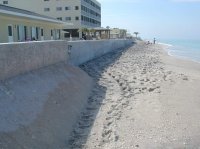
Sea turtle nesting beaches around the world have been substantially altered by urbanization and development. Coastal areas are considered prime real estate and many of the world’s beaches have been heavily developed. Coastal property owners along beaches threatened by erosion often build armoring structures such as vertical seawalls and sloping rock revetments to help protect their land from erosion. Sea walls can take many forms and be constructed from wood, steel, concrete and even hundred ton ¼-mile long bags of sand known as geotube armoring. Coastal armoring structures such as sea walls on or adjacent to nesting beaches can prevent sea turtles from continuing their life cycles. Sea walls directly threaten sea turtles by reducing or degrading suitable nesting habitat. They block turtles from reaching the upper portion of the beach, causing turtles to nest in less-than-optimal nesting areas lower on the beach where their nests are more susceptible to wave action and more likely to by covered with water. In addition, studies have shown that fewer turtles emerge onto beaches with seawalls than onto adjacent, non-walled, natural beaches. Those turtles that do emerge in front of seawalls often return to the water without nesting, known as a false crawl. While sea turtles naturally false crawl on all nesting beaches, the rate of false crawls is generally significantly higher in front of sea walls. Learn more about Clarissa Cobblecrumb’s Cause.
Adult Harvest for Meat Consumption
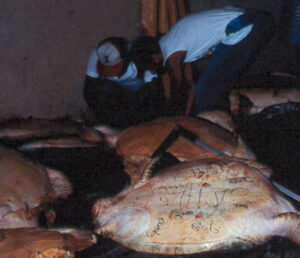
Although sea turtles have spiritual or mythological importance in many cultures around the world, this has not prevented humans from consuming their meat. In many coastal communities, especially in Central America and Asia, sea turtles provided a source of food. During the nesting season, turtle hunters comb the beaches at night looking for nesting females. Often, they will wait until the female has deposited her eggs to kill her. Then, they take both the eggs and the meat. Additionally, people may use other parts of the turtle for products, including the oil, cartilage, skin and shell. Learn more about Cuperina III’s and Esmeralda’s Cause.
Illegal Sea Turtle Shell Trade
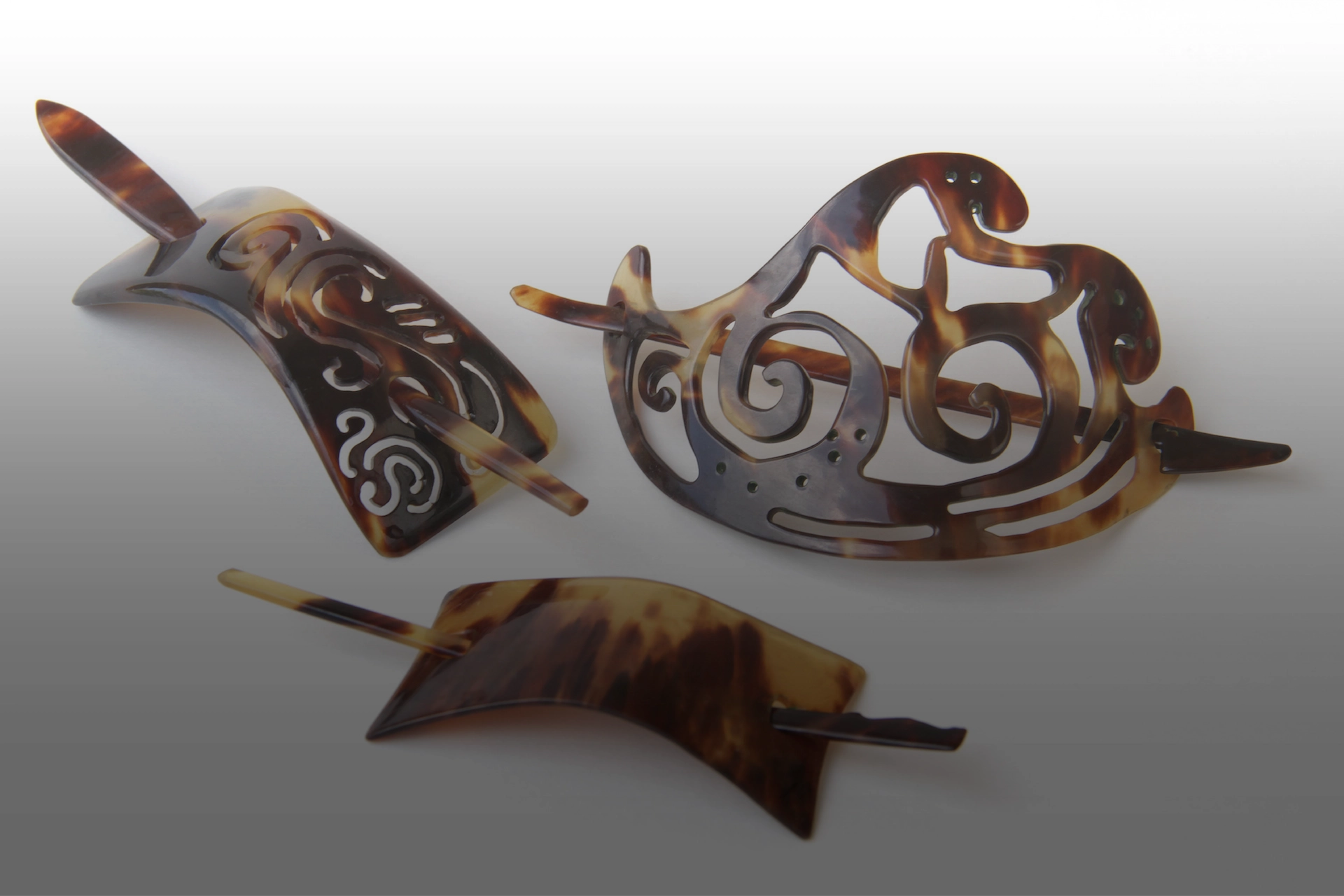
Hawksbill sea turtles, recognized for their beautiful gold and brown shells, have been hunted for centuries to create jewelry and other luxury items. As a result, these turtles are now listed as critically endangered. Scientists estimate that hawksbill populations have declined by 90 percent during the past 100 years. While illegal trade is the primary cause of this decline, the demand for shells continues today on the black market. The lack of information about sea turtles leads many tourists to unwittingly support the international trade in these endangered species. Buying, selling or importing any sea any sea turtle products in the U.S., as in many countries around the world, is strictly prohibited by law. Learn more about Rush’s Cause.
Commercial Trawl Fisheries
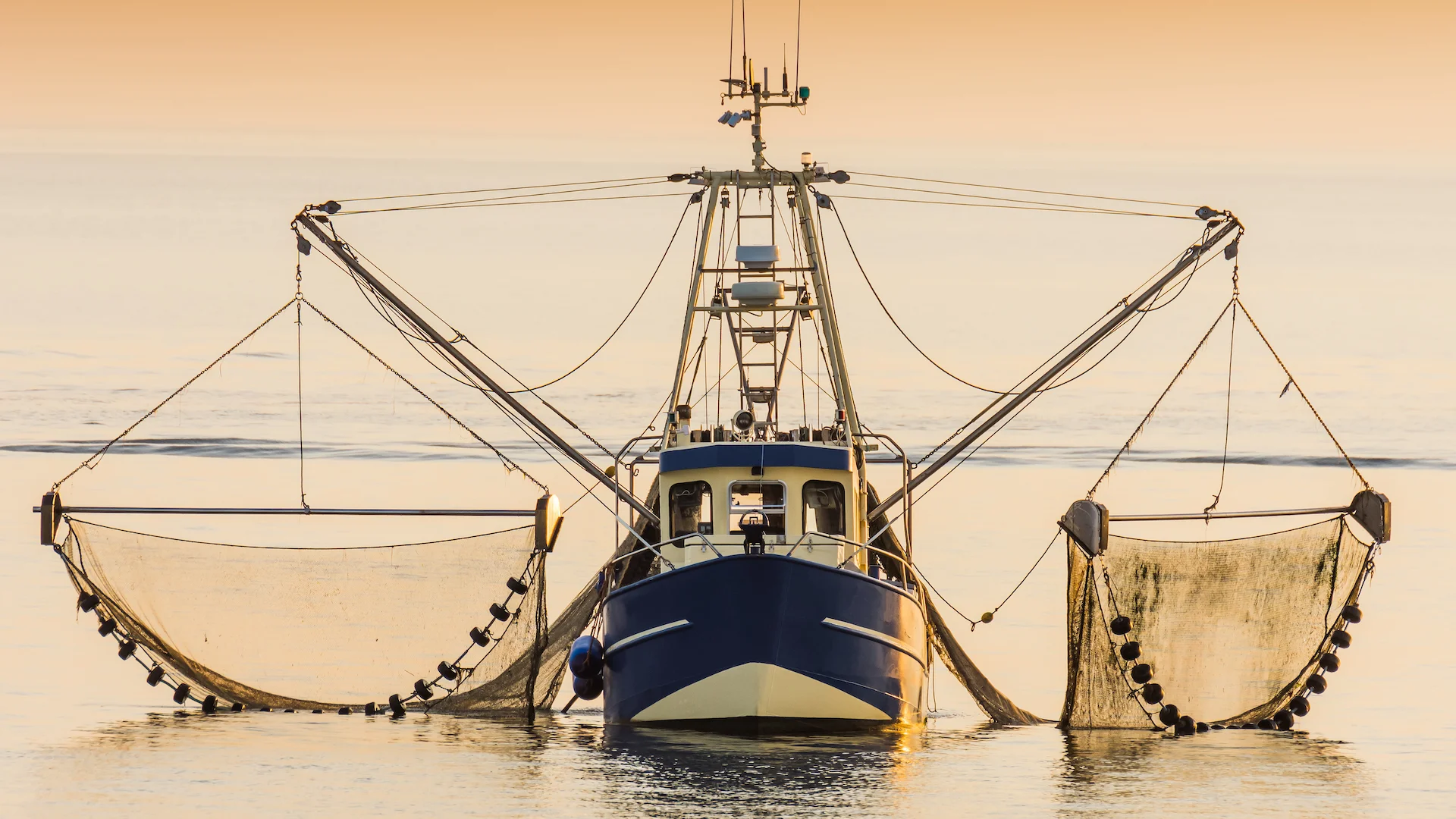
Each year thousands of adult and immature sea turtles are accidentally captured in fisheries ranging from highly mechanized operations to small-scale fishermen around the world. Global estimates of annual capture, injury and mortality are staggering – 150,000 turtles of all species killed in shrimp trawls and large numbers of all species drowned in gill nets. The extent of gill net mortality is unknown, but sea turtle capture is significant where studied, and the drowning of sea turtles in gill nets may be comparable to trawl and longline mortality. Deaths in gill nets are particularly hard to quantify because these nets are set by uncounted numbers of local fishermen in tropical waters around the world. Learn more about Wassaw Will’s Cause.
Beach Erosion
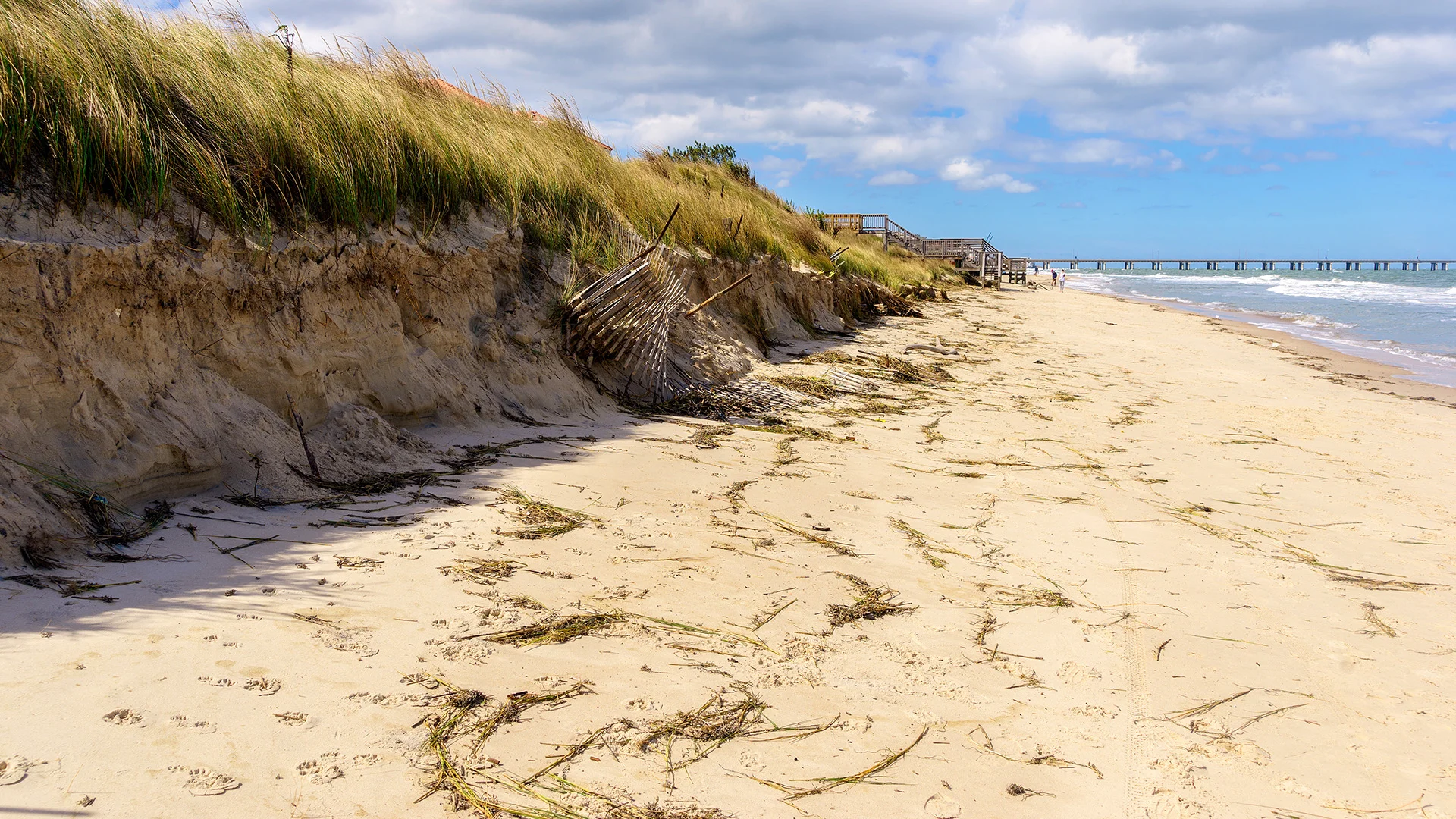
The erosion of turtle nesting beaches is a serious threat to nesting habitat in Florida. Coastal erosion is caused by the dredging of inlets, inappropriate shoreline development, construction of sea walls and coastal storms. As beaches recede landward nesting habitat can be lost to the point that turtles are forced to nest in areas of the beach that are regularly inundated, or even worse there may be no beach to even dig a nest. Beach renourishment is the primary strategy to combat coastal erosion in Florida. Renourishment consists of dredging and digging up sand from offshore or from inland sand deposits and depositing that sand onto a beach to replace what has been lost. While beach renourishment can restore degraded habitat and reduce the need for sea walls, especially when the beach is severely eroded, it must be carried out under strict guidelines that ensure the “new beach” is compatible for successful nesting. Learn more about Ariel’s Cause.

